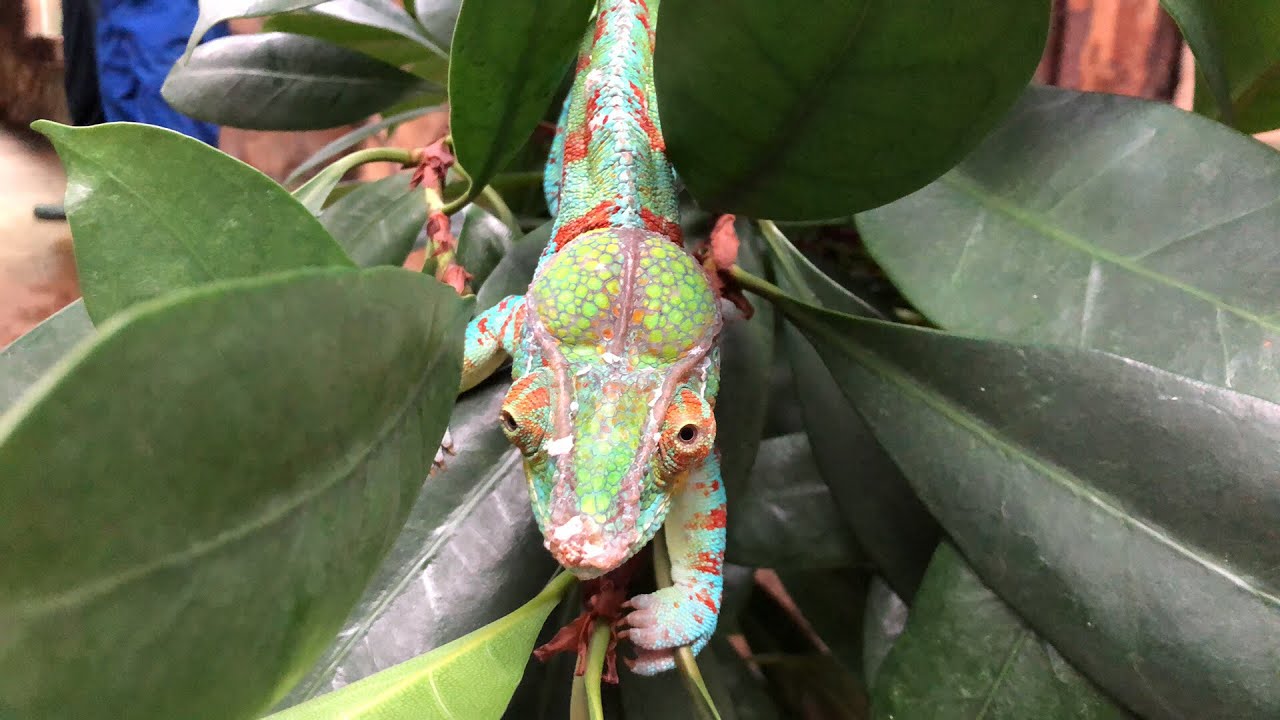*****
Summary of Transcript:
The video is a tour of Chester Zoo’s chameleon collection, featuring four different species of chameleons: bearded pygmy chameleons, Cameroon two-horned chameleons, panther chameleons, and Parsons chameleons. The tour explains each species’ various features and behaviors, including their camouflage techniques, preferred habitats, and diets. The video also highlights the importance of preserving and breeding these animals, as many chameleon species are endangered or threatened due to deforestation and the pet trade. Finally, the tour ends with a visit to “Mr. Parsons,” the adult breeding male of the Parsons chameleon species, who may soon have offspring on the way.
*****
The Colorful World of Chameleons: Masters of Camouflage and Climbing
Introduction
Chameleons, a family of reptiles scientifically known as Chamaeleonidae, have long captivated our attention with their incredible ability to change colors and expertly blend into their surroundings. These fascinating creatures are not only masters of camouflage, but they’re also extraordinary climbers, thanks to their unique adaptations. In this blog post, we will explore the world of chameleons and discover how they’ve evolved to become one of nature’s most intriguing species.
Color-Changing Wonders
Chameleons are famous for their color-changing abilities. They can change colors for various reasons, such as regulating body temperature, communicating with other chameleons, or blending into their environment as camouflage. The color change is made possible by specialized cells called chromatophores in the chameleon’s skin. These cells contain pigments that can expand or contract, altering our perceived color.
Camouflage Experts
Chameleons use their color-changing abilities to blend in with their surroundings, making them difficult for predators to spot. This camouflage technique is about color, texture, and shape. Chameleons can alter the appearance of their skin to mimic the surface of leaves or branches, further enhancing their camouflage abilities.
Unique Adaptations for Climbing
Chameleons are excellent climbers, thanks to various adaptations that help them navigate the arboreal environments they inhabit. Their zygodactylous feet have two toes facing forward and two facings backward, providing a secure grip on branches. Additionally, their prehensile tails act as a fifth limb, offering extra support and balance as they move through the trees.
Incredible Eyesight
Chameleons have unique, independently rotating eyes that give them a 360-degree field of vision. This incredible eyesight helps them spot potential prey or predators without moving their heads, maintaining their hidden position. When both eyes lock onto the same target, they can accurately judge distance, allowing them to strike with precision using their projectile tongues.
Diet and Hunting
Chameleons are primarily insectivores, feeding on insects like crickets, grasshoppers, and flies. They use their long, sticky tongues to catch prey, extending them rapidly to snatch insects from a distance. Some larger chameleon species may also consume small birds or reptiles on occasion.
Conclusion
Chameleons are truly remarkable creatures with their color-changing abilities, expert camouflage, impressive climbing skills, and extraordinary eyesight. These unique adaptations make them captivating to observe and highly effective in their natural habitats. By understanding and appreciating these fascinating reptiles, we can foster a greater appreciation for the diverse and remarkable world of reptiles.
Source Description


